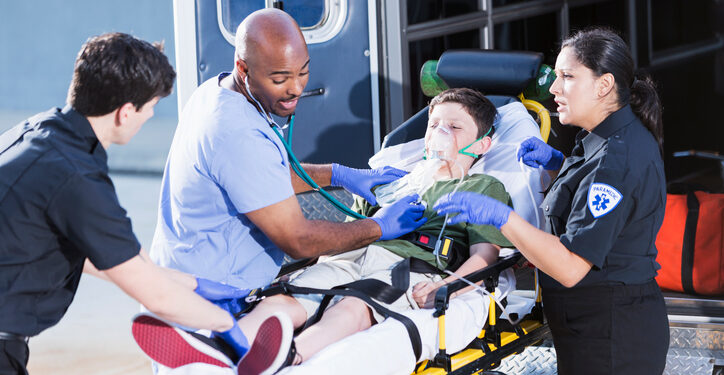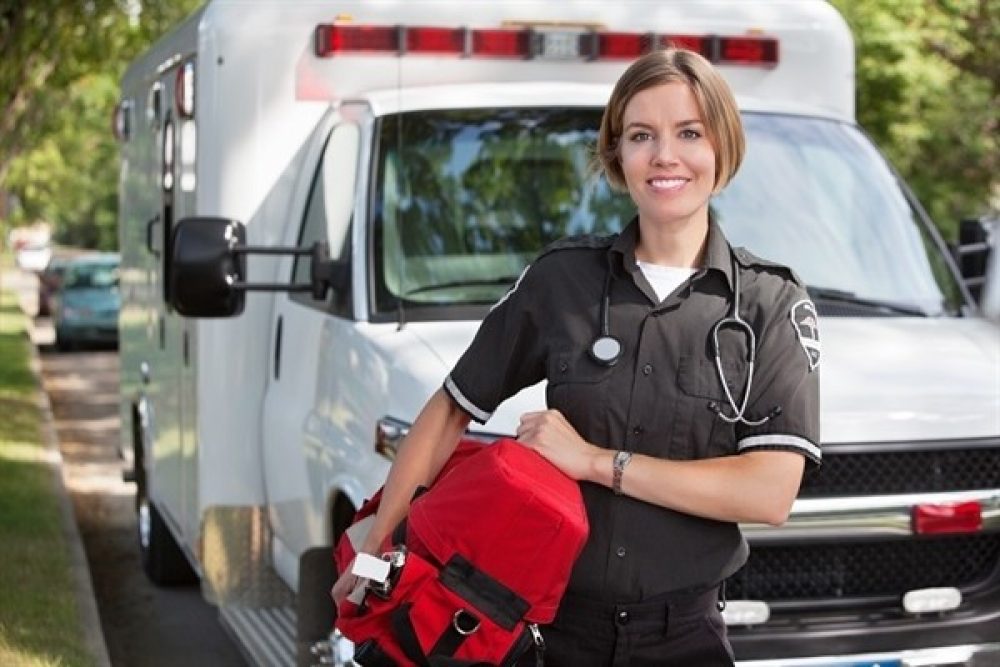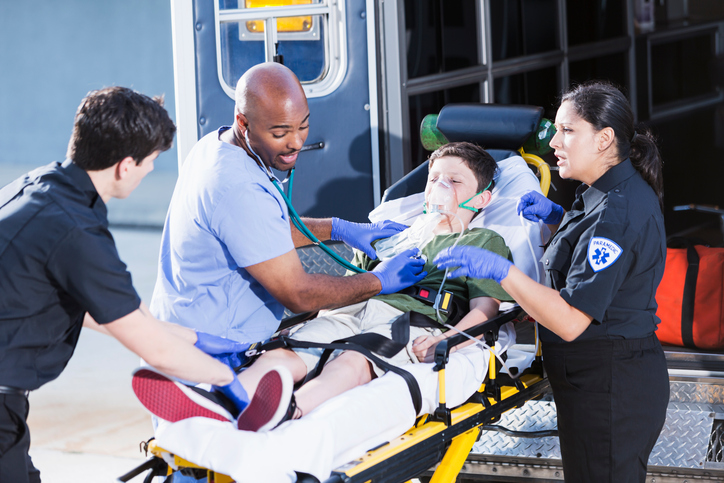Volunteer EMT

Volunteer EMT positions will grow by 6% through 2033. These roles don’t pay traditionally, but they are a great way to get hands-on healthcare experience. Many organizations offer special perks like free training and educational scholarships.
Becoming a volunteer EMT starts with a 100-hour formal training program and state certification. These dedicated first responders play vital roles during nights, weekends, or on-call shifts. Their contribution makes them irreplaceable members of emergency response teams. Success in this rewarding field depends on understanding EMT volunteer training’s true nature.
This piece explores volunteer EMT training’s realities. It covers daily requirements, schedule flexibility, and the physical demands these emergency responders face. The emotional challenges these professionals encounter also form an important part of their journey.

Table of Contents
- 1 The Reality of EMT Volunteer Training Programs
- 2 Essential Skills You’ll Develop During Training
- 3 Navigating the Certification Process
- 4 The Emotional Journey of EMT Volunteering
- 5 Your First Shifts as a Volunteer EMT
- 6 Here are some FAQs about volunteer EMT:
- 6.1 What are EMS volunteers?
- 6.2 What is the shortest time to become an EMT?
- 6.3 What is a volunteer medic?
- 6.4 What does EMT stand for?
- 6.5 How old is the average EMT?
- 6.6 What is the oldest age you can become an EMT?
- 6.7 What is an active responder volunteer?
- 6.8 Is EMS the same as first responders?
- 6.9 What is the youngest age to be an EMT?
The Reality of EMT Volunteer Training Programs
Medical dramas make EMT work look glamorous, but volunteer EMT training programs just need serious dedication and persistence. State-approved programs typically require about 100 hours of complete classwork that focuses on emergency medical care basics. This training creates the foundation for volunteer service that can positively affect communities and the EMTs themselves.
What training actually involves day-to-day
EMT volunteer training blends classroom learning with hands-on practice. Students learn various emergency medical topics including patient assessment techniques, field equipment usage, and emergency response. They build their skills through:
- Medical basics like anatomy, physiology, and pathophysiology
- Practical skills such as CPR, airway management, and patient immobilization
- Scenario-based training that mimics real emergency situations
The curriculum follows National Education Standards to ensure consistent knowledge and skill development across programs. Students must show they’ve mastered individual skills through evaluation check sheets that meet the National Registry of Emergency Medical Technicians’ minimum criteria.
The programs also include roughly 150 hours of internship rotations at hospitals, clinics, and EMS agencies, which gives vital real-life experience under supervision. These clinical components help volunteer EMT trainees use their classroom knowledge in actual emergency settings.
Time commitment: hours and schedule flexibility
Program structure determines how much time volunteer EMT training takes. Options range from 2-week intensive courses with 10-12 daily hours to longer 3-5 month programs with evening classes two or three times weekly. This range lets future volunteers pick formats that fit their schedules.
Certified volunteer EMTs usually work 12-24 hours monthly at minimum, though many choose extra hours. Organizations often structure these hours as:
- Weekly 12-hour shifts
- Monthly rotation schedules
- Event-based assignments with yearly minimums
Most volunteer programs know it’s challenging to balance EMT service with personal life. They offer various scheduling options including weekday, weekend, and overnight shifts to fit different schedules. Students, healthcare professionals, and full-time workers find this flexibility particularly helpful.
Physical vs. classroom components
EMT training’s physical demands match emergency response work’s reality. Volunteer EMTs must be strong enough to handle tough situations, like lifting patients and equipment that weighs at least 100 pounds. Training programs usually include:
Classroom instruction teaches key theoretical knowledge through lectures about medical concepts, emergency protocols, and patient care standards. These lessons build the knowledge base that guides emergency medical decisions.
Skills labs develop physical abilities like proper lifting techniques, patient moving procedures, and equipment handling. These practical sessions prepare volunteers for emergency response’s physical challenges.
EMTs need to build endurance throughout their training because shifts can last beyond 12 hours. Complete programs emphasize balance, coordination, and flexibility training to ready volunteers for unpredictable situations.
Physical training intensifies gradually so trainees can build strength, mobility, and cardiovascular endurance for effective emergency response. The classroom portion focuses on critical thinking and decision-making skills that EMTs need for patient assessment and care during stressful situations.
Essential Skills You’ll Develop During Training
Volunteer EMT training gives first responders a detailed set of skills that go way beyond their simple medical knowledge. These skills are the foundations of emergency response that improve through classroom education and hands-on experience.
Medical knowledge fundamentals
Volunteer EMT training starts with a solid grasp of human anatomy and physiology. EMT-Basic programs teach simple topics like patient condition assessment, emergency management protocols, and field equipment operation. This medical foundation helps EMTs spot critical problems quickly and take the right action.
Students learn systematic ways to review patients. The training covers:
- Vital signs assessment and normal vs. abnormal ranges
- Common emergency conditions and their signs
- Simple medication administration
- Treatment protocols based on their certification level
Medical knowledge builds the foundation for all other EMT skills. EMTs learn “how to evaluate patients’ symptoms and determine the appropriate treatment”. This skill becomes vital when they respond to emergencies of all types.
Critical decision-making under pressure
EMT training develops the mental skills needed during emergencies. Students learn to create, verify, and reject clinical theories through step-by-step assessment. EMTs prioritize their actions based on life-threatening conditions rather than obvious problems.
Critical thinking exercises teach EMTs to assess changing situations constantly. The training focuses on what researchers call “Recognition-Primed Decision Making.” EMTs match current problems with past experiences to create effective action plans. Students practice tough decisions with limited information through scenario-based learning that mirrors real-life emergencies.
Communication techniques for emergencies
Clear communication makes emergency response work better. EMT training develops precise verbal skills for talking to patients, coordinating with teams, and hospital handoffs. Students understand that “establishing rapport and gaining the patient’s trust can be crucial in obtaining the information needed to care for the patient properly”.
Documentation skills matter too. Research shows that “incomplete documentation by paramedics persisted in cases of critically injured patients”. EMTs become skilled at using standard communication tools that ensure important information moves through the care chain.
Physical skills and patient handling
Emergency response demands special training in body mechanics and patient handling. EMTs learn proper lifting using the W-S-L principles: “Wide stance – Set lower back – Drive the weight using the legs”. These simple movements prevent injuries to both patients and responders.
Training programs include practice sessions where students learn various carries, transfers and moving techniques. Most EMS agencies expect EMTs to lift at least 100 pounds safely. Physical training builds strength and proper technique. EMTs prepare for environments of all types—from tight spaces to rough terrain—while keeping everyone safe.

Aspiring volunteer EMTs must pass their certification phase after learning basic medical knowledge and practical skills. The National Registry of Emergency Medical Technicians (NREMT) certification process guards emergency medical service quality. This process makes sure all EMTs meet standard competency levels, whatever their volunteer status.
Understanding NREMT requirements
Candidates start their NREMT certification journey by completing an approved EMT training program. They must create a National Registry profile and meet current entry requirements. These requirements include age verification, education documentation, and CPR certification. The certification process needs candidates to pass both cognitive and psychomotor examinations within specific time limits.
Timing plays a significant role for volunteer EMT candidates. Course completion records stay valid for two years from their issue date. The authorization to test (ATT) documents remain valid for just 90 days after issue. Candidates who complete NREMT certification between January and June get certification until March 31 two years later. Those finishing between July and December receive certification valid until March 31 three years later.
Volunteer EMTs need to know key deadlines for examination results. Both cognitive and psychomotor examination results stay valid for 24 months from successful completion. Missing these deadlines means retaking expired components.
Preparing for the cognitive exam
The NREMT cognitive examination uses Computerized Adaptive Testing (CAT) that changes question difficulty based on performance. Volunteer EMT candidates usually answer 70-120 multiple-choice questions. These cover airway management, cardiology, trauma care, medical emergencies, and EMS operations.
These strategies help maximize preparation:
- Understand the format: Learn adaptive testing principles where questions get harder or easier based on your answers
- Create structured study plans: Study 1-2 hours daily instead of cramming before the test
- Practice active learning: Use flashcards, practice questions, and teach concepts to others rather than just reading
- Focus on identified weaknesses: The NREMT gives feedback on failed attempts so you can target weak areas
Candidates must complete remedial education after three failed attempts. They can satisfy this by completing a 20-credit National Competency Component course, a state-approved EMT refresher course, or equivalent state-approved education program.
Mastering the psychomotor assessment
The psychomotor examination tests practical skills while the cognitive exam checks medical knowledge. State EMS offices or authorized educational institutions give this hands-on assessment. It includes six fixed stations plus one random skill demonstration.
Candidates must show they can handle cardiac arrest management, control bleeding, immobilize joints, and give oxygen. Each skill station has “Critical Criteria” items that lead to automatic failure if done incorrectly.
Volunteer EMT programs provide practical skills verification forms before testing. These forms confirm candidates’ detailed psychomotor competency. Advanced certification levels need a Psychomotor Authorization to Test (PATT) letter before examination.
Certified candidates can access their credentials through their National Registry account. Physical credentials arrive by mail within 30 days. This certification builds the foundation for local or state licensure. EMTs can then serve their communities while meeting national competency standards.
The Emotional Journey of EMT Volunteering
Being a volunteer EMT demands more than knowing medical procedures—it takes immense emotional strength. Research shows EMS personnel have higher chances of developing post-traumatic stress disorder (PTSD), depression, and substance abuse. The emotional side of this work doesn’t get much attention during the original training, yet it determines long-term success in emergency medical services.
Mental preparation for challenging scenarios
Mental preparation becomes vital before entering the field because emotional stress builds up over time in volunteer EMT work. Volunteer EMTs face high-stress situations often. These include trauma cases, abuse scenarios, and life-threatening emergencies that can cause emotional distress. This exposure leads to what experts call “vicarious trauma”—where witnessing others’ suffering takes an emotional toll.
Volunteer EMTs should take these steps to guide through challenges:
- Accept that emotional responses to traumatic scenarios are normal
- Spot personal stress symptoms early, like changes in sleep patterns or mood
- Build practical coping skills before difficult situations arise
- Remember that patients need two basic things: respect and understanding
Seasoned EMTs suggest mentally rehearsing possible scenarios before reaching calls. This method cuts down anxiety by building preparedness and clarity about procedures. EMTs can then focus on patient needs despite emotional hurdles.
Building resilience through training
People can develop resilience—knowing how to bounce back from stress and adversity—through proper training and practice. This journey starts during the original training and continues throughout an EMT’s service. Mental health experts point out that both internal traits (like optimism) and external support systems help build this vital quality.
A complete self-care plan helps build resilience by addressing physical, emotional, psychological, spiritual, interpersonal, and professional development needs. Personal rituals create psychological boundaries—some EMTs change out of their uniforms right after shifts to mentally “close” difficult experiences.
Many volunteer EMT organizations now run specialized programs about mental health resilience. These programs teach ways to identify colleagues under mental stress and direct them toward support services. EMTs can process their experiences through debriefing sessions with supervisors or team members after tough calls.
EMT volunteering comes with emotional challenges, but good preparation and resilience-building techniques help volunteers provide compassionate care while protecting their mental health.
Your First Shifts as a Volunteer EMT
The step from classroom training to active service is a defining moment for every volunteer EMT. Your first few shifts will build the groundwork for a successful volunteering experience and shape how you blend into your emergency response teams.
What to expect after certification
Newly certified volunteer EMTs dive straight into ground emergency response. Most organizations start with shift briefings to assign duties, review previous calls, and share important protocol updates. You’ll need to work at least nine shifts every quarter, including three weekend shifts and two holiday shifts each year.
Emergency calls are different from what you practice in simulations. New volunteers often handle overdoses, heart attacks, and broken bones as they provide critical prehospital care. Patient Care Reports (PCRs) become a vital part of your duties – you must complete them for every call to capture essential medical and legal details.
Working with experienced EMTs
Organizations typically team up new volunteer EMTs with experienced partners or charge EMTs who guide them through their first calls. This mentoring setup is a great way to get hands-on experience. Veteran EMTs show proper assessment techniques, how to apply protocols, and ways to interact with patients in real situations.
Teamwork is the life-blood of effective emergency response. You’ll need to quickly connect with your partners and crew members to build the trust needed in high-pressure situations. Experienced team members share practical advice about tough situations and help newcomers develop their professional judgment.
Common challenges for new volunteers
New volunteer EMTs often find the physical demands challenging. The role requires strength to help transport patients and stamina to work long shifts that can last over 12 hours. Staying alert during these extended periods is tough but crucial.
Finding the right work-life balance is another big challenge. About 70% of volunteers struggle to balance their service commitments with personal life. Many volunteer EMTs get only 3-6 hours of sleep on deployment nights before heading back to their regular jobs.
Emotional challenges surface as volunteers face traumatic situations. Regular exposure to emergencies can lead to compassion fatigue or PTSD if proper support isn’t available. Successful volunteer EMTs learn effective stress management techniques and use mental health resources when needed.
Becoming a volunteer EMT takes deep dedication that goes way beyond the original 100-hour training program. This challenging yet noble path gives you exceptional opportunities to serve communities and get valuable healthcare experience.
Your success as an EMT depends on physical stamina, emotional resilience, and steadfast dedication. Certified volunteers tackle a variety of challenges – they manage extended shifts and process traumatic scenarios. A detailed training program will give you the vital skills you need to excel in emergency response.
Strong support systems and strategic collaborations with experienced EMTs play a vital role as you move from training to active service. The best volunteers learn to balance their commitments. They stay mentally healthy through time-tested coping methods and organizational resources.
The path to EMT certification might look overwhelming at first. People who push through training, excel in cognitive and psychomotor tests, and tackle emotional challenges become part of a critical emergency response network. Their commitment helps communities get vital care when every minute counts.
Here are some FAQs about volunteer EMT:
What are EMS volunteers?
EMS volunteers, often called volunteer EMTs, are trained emergency medical technicians who provide critical medical services without pay. These dedicated individuals respond to emergency calls through local organizations offering EMT volunteer opportunities in their communities. You can find these positions by searching for “volunteer EMT near me” or “EMT volunteer near me” to locate programs in your area.
What is the shortest time to become an EMT?
The fastest EMT certification programs can be completed in about 3-4 weeks of intensive training, which is required before pursuing EMT volunteer opportunities. These accelerated courses cover all necessary skills for volunteer EMT work but require full-time commitment. After certification, you can search for “EMT volunteer near me” to begin gaining practical experience.
What is a volunteer medic?
A volunteer medic is essentially a volunteer EMT who provides basic life support and emergency medical care. These EMS volunteers operate similarly to paid EMTs but donate their time through local EMT volunteer opportunities. Organizations often advertise for “volunteer EMT near me” positions that allow certified individuals to serve their communities as volunteer medics.
What does EMT stand for?
EMT stands for Emergency Medical Technician, the certification required for both paid and volunteer EMT positions. Whether you’re interested in EMT volunteer opportunities or professional roles, all candidates must complete EMT training. Search for “EMT volunteer near me” to find organizations where certified EMTs can volunteer their skills.
How old is the average EMT?
The average EMT, including volunteer EMT professionals, is typically in their late 20s to early 30s. Many EMS volunteers start young, with opportunities available by searching “volunteer EMT near me” after meeting age requirements. The EMT volunteer demographic often includes college students and those exploring healthcare careers.
What is the oldest age you can become an EMT?
There’s no maximum age limit to become an EMT, including for EMT volunteer positions. Many retirees find rewarding second careers through EMT volunteer opportunities in their communities. You’re never too old to search for “EMT volunteer near me” and begin training to help others in emergency situations.
What is an active responder volunteer?
An active responder volunteer typically refers to a volunteer EMT or EMS volunteer who regularly responds to emergency calls. These individuals commit to ongoing shifts through local EMT volunteer opportunities. Organizations frequently recruit active responders by advertising “volunteer EMT near me” positions for dedicated community members.
Is EMS the same as first responders?
While all EMS volunteers are considered first responders, the term “first responder” also includes firefighters and police. Volunteer EMTs specialize specifically in medical emergencies within the EMS volunteer system. Searching for “EMT volunteer near me” will connect you with medical-focused first responder opportunities.
What is the youngest age to be an EMT?
Most states require EMTs, including volunteer EMT professionals, to be at least 18 years old. Some EMS volunteer programs may accept younger individuals for non-EMT roles until they meet age requirements. Check local “volunteer EMT near me” listings for specific age policies in your area.

